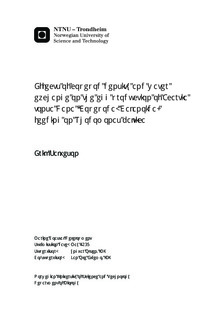Effects of copepod density and water exchange on the egg production of Acartia tonsa Dana (Copepoda: Calanoida) feeding on Rhodomonas baltica
| dc.contributor.advisor | Olsen, Yngvar | nb_NO |
| dc.contributor.advisor | Evjemo, Jan Ove | nb_NO |
| dc.contributor.author | Salveson, Erik | nb_NO |
| dc.date.accessioned | 2014-12-19T13:13:06Z | |
| dc.date.available | 2014-12-19T13:13:06Z | |
| dc.date.created | 2013-07-15 | nb_NO |
| dc.date.issued | 2013 | nb_NO |
| dc.identifier | 637036 | nb_NO |
| dc.identifier | ntnudaim:10231 | nb_NO |
| dc.identifier.uri | http://hdl.handle.net/11250/245260 | |
| dc.description.abstract | In this study, the objective was to investigate the effect of different copepod densities and the water exchange rate day-1 on the egg production of Acartia tonsa feeding on Rhodomonas baltica. It was a main task to find the best conditions for a maximum egg production in a large scale production system. The egg production under 3 different copepod densities (5, 8-10 and 20-53 ind/ml) and with water exchange rates of 100 and 500 % day-1 were tested. In addition, other variables like ammonia, temperature (20 °C), pH (8), salinity (24-34 ), dissolved 02 (> 5 mg/L) were measured and controlled if possible. Hatching success, female ratio, eggs per female and different consumption tests were measured. | nb_NO |
| dc.language | eng | nb_NO |
| dc.publisher | Institutt for biologi | nb_NO |
| dc.title | Effects of copepod density and water exchange on the egg production of Acartia tonsa Dana (Copepoda: Calanoida) feeding on Rhodomonas baltica | nb_NO |
| dc.type | Master thesis | nb_NO |
| dc.source.pagenumber | 52 | nb_NO |
| dc.contributor.department | Norges teknisk-naturvitenskapelige universitet, Fakultet for naturvitenskap og teknologi, Institutt for biologi | nb_NO |
Files in this item
This item appears in the following Collection(s)
-
Institutt for biologi [2514]

